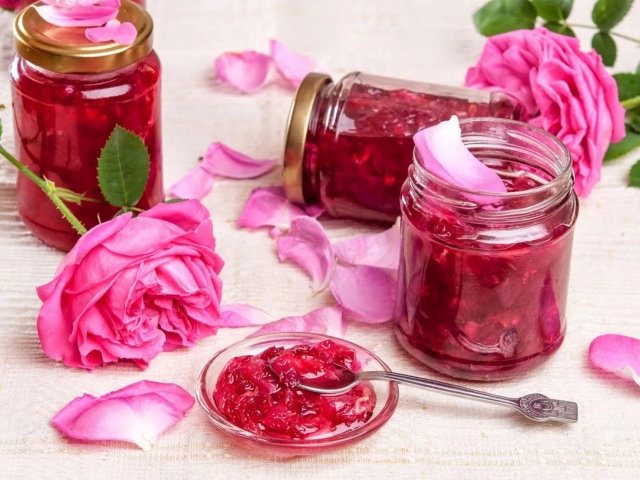
Flowers are not only a beautiful addition to gardens and bouquets but also a surprising ingredient in the kitchen. Many of them are edible and can enrich the flavor of familiar dishes, add elegance to presentation, and even benefit your health. The key is to know which types are safe to eat and how to use them properly. In this overview, we will look at seven edible flowers that have long held a place in culinary traditions.

Roses
In cooking, the petals of garden and tea roses are most commonly used, especially fragrant varieties with a strong aroma. Their flavor ranges from slightly sweet to mildly spicy, with subtle fruity notes. Rose petals are added to jams, syrups, desserts, Middle Eastern sweets, beverages, and even salads. It is important to use only flowers that have not been treated with chemicals and to remove the white part of the petal, as it can be bitter.

Nasturtium
Nasturtium is known for its versatility. Not only the petals, but also the leaves, buds, and even unripe seeds are edible. In cooking, the greater and canary nasturtiums are most used. They have a bold, zesty flavor with a touch of spice and a fresh note reminiscent of cress or young radish. Nasturtium, which is rich in vitamin C, is added to salads, sandwiches, cold appetizers, and creamy sauces. Buds and green seeds can be pickled as a substitute for capers.

Marigolds
In the kitchen, upright and signet marigolds are especially valued for their spicy aroma and rich flavor with citrus and spice notes. In Caucasian cuisine, marigold petals are known as "Imeretian saffron" and are used in dry spice blends, sauces, and soups. The flowers add a bright color and distinct bitterness to dishes. They can be added to rice, vegetable stews, meat marinades, and dressings. Interestingly, marigolds not only enhance flavor but also have antiseptic properties.
Borage
Borage is widely used in cooking due to its fresh, slightly cucumber-like taste. Both the vivid blue flowers and young leaves are edible. The flowers are often added to salads, cocktails, desserts, and frozen into ice cubes to bring color and appeal. The greens are used in cold soups, sauces, and vegetable dishes. Borage is valued for its refreshing flavor and high vitamin C content, but it should be consumed in moderation, as the plant contains alkaloids that are safe only in small amounts.
Calendula
In cooking, calendula officinalis is mainly used, appreciated for its rich color and mild, spicy flavor with a hint of bitterness. Its bright orange petals are often referred to as "poor man's saffron" and are added to rice, soups, baked goods, creamy sauces, and omelets for color and aroma. Dried petals can be used as a spice or decorative element. Calendula is also known for its anti-inflammatory properties, but moderation is important in cooking—too much can make the dish bitter and overpower other flavors.
Chives
Chives are valued in cooking for their delicate, slightly sharp flavor with a distinct onion note. Not only the green shoots are edible, but also the small purple-pink flowers grouped in spherical clusters. The flowers are added to salads, sauces, soft cheese spreads, and appetizers, giving the dishes a mild spiciness. Chives can withstand heat treatment but are most often used fresh. They pair well with vegetables, eggs, and soft cheeses.
Pansies (Viola tricolor)
Viola tricolor, or pansies, are decorative plants with delicate blooms that are used in cooking for their mild flavor and striking appearance. Both wild and garden varieties are edible, provided they have not been chemically treated. The flowers have a slightly grassy taste and do not affect the overall flavor of a dish, making them highly versatile. Pansies are added to salads, desserts, baked goods, drinks, and even frozen into ice for decorating cocktails.